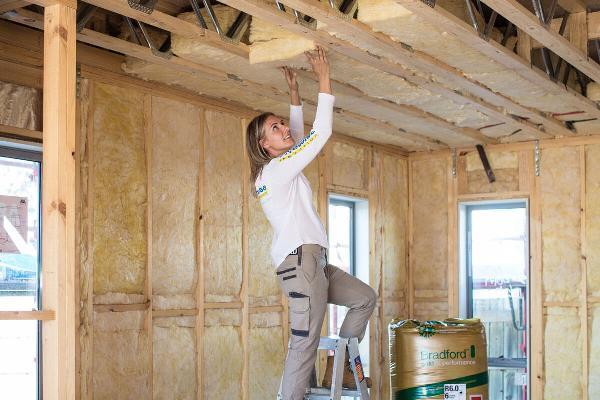How To Attach Insulation?

Strong 8k brings an ultra-HD IPTV experience to your living room and your pocket.
Attaching insulation correctly is key to its effectiveness. First, measure the space to cut the insulation to the right size. Use a utility knife for precision. For fiberglass or foam board, fit it snugly between wall studs or floor joists—staple batting paper or foil vapor barrier to studs, sealing gaps. For rigid panels, apply construction adhesive on the back, and press firmly. Always cover insulation with drywall or another wall covering for safety and aesthetics. Remember, for attics and basements, specific insulation types like spray foam may be best. Always wear protective gear - gloves and a mask - to avoid irritation from fibers.
Measuring Spaces for Insulation
Measuring spaces for insulation is crucial. Start by using a tape measure. Record the width and height of the space. Accuracy is key for a good insulation estimate for construction. Measure twice to confirm. Include odd corners or nooks. Calculating the area comes next. Multiply the width by height for each section. Add all areas for total square footage. This method ensures you buy enough material without waste. Remember, accurate measurements save time and money. Always round up to the nearest whole number for ease.
Choosing the Insulation Material:
Insulation material selection is critical for temperature control, energy efficiency, and comfort. Here's a closer look at the options:
Fiberglass Insulation:
Fiberglass insulation is a common, affordable, and versatile material, often found in batts or rolls.. It's made from fine glass fibers and is suitable for insulating walls, attics, and floors. Its R-value per inch (a measure of thermal resistance) varies depending on the thickness and density. It's relatively easy to install but requires protective gear to handle due to its irritating fibers.
Foam Board Insulation:
This type comes in rigid panels and is known for its high insulating value per inch of thickness. Foam boards can insulate almost any part of your home, from the roof down to the foundation. They are typically made from polystyrene, polyisocyanurate, or polyurethane. They are also beneficial in reducing heat conduction through structural elements like wood and steel studs.
Spray Foam Insulation:
Spray foam insulates and seals by filling gaps, creating a tight thermal envelope. It is ideal for odd shapes or areas that are difficult to insulate using traditional methods. Spray foam comes in two types: open-cell and closed-cell. Closed-cell foam offers a higher R-value and better moisture barrier. It's more expensive than fiberglass or foam board but offers superior performance in terms of air sealing and insulation.
Applying Rigid Foam Board
A rigid foam board is useful for insulating any part of the house. Its high R-value per inch adds excellent thermal resistance. Measure and cut the board to fit the space. Use a utility knife for precise cuts. Apply construction adhesive to the panel's back. Press it firmly against the surface, ensuring it fits snugly. Seal all edges to prevent air leaks. Cover with a protective layer like drywall for safety and appearance. This type of insulation works well on exterior walls and basements.
Stapling Batting Paper and Vapor Barriers
Stapling batting paper or vapor barriers is a critical step in insulation installation. Moisture barriers prevent mold growth and maintain insulation effectiveness by blocking moisture passage. First, spread the batting paper or vapor barrier over the insulation. Align it carefully with the edges of the studs. Then, using a staple gun, secure the barrier to the studs every few inches. Make sure it's smooth and tight, without any wrinkles or gaps. This process ensures the insulation remains dry and efficient. Always ensure the barrier faces the warm side of the room to prevent condensation.
The Importance of Covering Insulation
Covering insulation is necessary for safety and appearance. Bare insulation can be a fire hazard. It can also release irritating fibers. Drywall or special panels are common coverings. They keep the insulation contained. This makes buildings safer and better looking. Always use the right cover to protect the insulation. Consult a professional for guidance on what type of cover is best suited for your specific insulation material and location. Proper covering also helps maintain the insulation's R-value by preventing air leaks and keeping it dry.
Special Considerations for Attics and Basements
Attics and basements need special insulation attention. Heat rises, making attics hot. Insulate attic floors to keep heat out of living spaces. Use high R-value materials. Basements are prone to moisture. Choose insulation that resists water. Foam board is ideal for basements. Always seal gaps to prevent leaks. Moisture barriers are crucial in both areas. Proper ventilation prevents mold in attics and basements. Check local codes for insulation requirements. Each area has unique needs for energy efficiency.
Safety Tips for Handling Insulation Materials
Handling insulation materials safely is key. Always wear gloves, a mask, and goggles. These protect against fibers and dust. Avoid skin contact with insulation to prevent irritation. Insulation can be sharp. Be careful when cutting or handling it. Keep the work area well-ventilated. This reduces inhalation risks. Dispose of waste properly. Follow manufacturer guidelines. Safety first always ensures a smoother installation process.
Conclusion
Effective insulation is crucial for energy efficiency and comfort in homes. Each type of insulation has its specific installation guidelines. Remember, safety is paramount. Wear appropriate gear. Seal gaps carefully. Cover insulation properly. Consult professionals if unsure. Doing so ensures a warm, safe, and efficient home. With proper insulation, you can save on energy costs and reduce your carbon footprint. Consider the type of insulation that best suits your needs and location for optimal results. Stay warm, stay safe! "Protect and comfort your home with quality insulation, installed properly with proper techniques."
Note: IndiBlogHub features both user-submitted and editorial content. We do not verify third-party contributions. Read our Disclaimer and Privacy Policyfor details.


